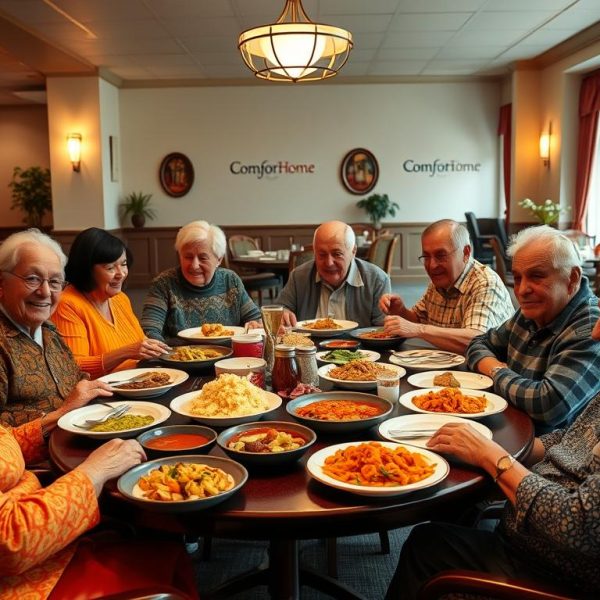It was late afternoon when Sarah finally sat down with a sigh, her eyes scanning the family living room. Her father, a man once full of life and energy, now sat quietly by the window, watching the sun dip behind the trees. Sarah had become his primary caregiver after his diagnosis of Alzheimer’s two years ago. She loved her father dearly, but she hadn’t realized how much caregiving would demand—physically, emotionally, and mentally. The endless doctor appointments, medication schedules, and sleepless nights were beginning to take a toll. One day, her neighbor Joan, who was also caring for an aging parent, mentioned the concept of respite care. Joan described it as a much-needed lifeline, offering temporary relief so family caregivers like Sarah could rest and recharge. Joan shared her experiences, telling Sarah about how she had used a local adult day center and occasional in-home care to help lighten her load.
Curious, Sarah began to research. What she found was a world of respite care services designed to support family caregivers in ways she hadn’t imagined. Below is what Sarah learned on her journey—a guide to the top 10 respite care options every family caregiver should know about.
1. In-Home Respite Care
For Sarah, the idea of having a professional come to the house was appealing. In-home respite care brings trained caregivers into the senior’s home to provide temporary relief to the family. This type of service can be customized to the caregiver’s needs, whether it’s for a few hours or overnight.
Benefits: It allows the caregiver to step out for a break while the loved one remains in the comfort of their home. The caregivers can assist with everything from personal hygiene to meal preparation, ensuring continuity in care.
Sarah decided to try it once a week to run errands and take time for herself. The break, although short, made all the difference.
2. Adult Day Care Centers
One morning, Sarah visited an adult day care center Joan had recommended. These centers provide care during the day in a safe, social environment for seniors who need supervision or assistance. They offer engaging activities, meals, and sometimes even transportation services.
Benefits: It’s an affordable option and gives caregivers like Sarah an extended break during the day. Seniors can interact with peers, participate in activities, and stay active, while caregivers know their loved ones are in good hands.
Sarah’s father, who enjoyed socializing, found the change refreshing. He even made a new friend at the center, giving him something to look forward to during the week.
3. Short-Term Nursing Homes
During one particularly exhausting week, Sarah began looking into short-term stays at nursing homes. These facilities often offer respite care for a few days or weeks. It’s an excellent option when caregivers need a longer break, perhaps for a vacation or an emergency.
Benefits: Nursing homes have skilled staff available 24/7 to provide care for individuals with complex medical needs, ensuring their well-being in a professional environment. Caregivers can take extended time off, knowing their loved ones are in a safe, medically-equipped place.
This became Sarah’s go-to option when she needed to take longer breaks to recharge fully.
4. Residential Respite Care in Assisted Living Facilities
Sarah discovered that many assisted living facilities offer short-term respite care services. Her father could stay in a furnished apartment, receive personal care, meals, and participate in social activities. This option became particularly useful when Sarah had family obligations out of town.
Benefits: It provides a more homelike environment than a nursing home, with a focus on independence and social engagement. Caregivers can rest assured their loved ones are being cared for in a lively community setting.
Sarah appreciated how her father could enjoy his stay in a friendly environment that felt less clinical than a nursing facility.
5. Volunteer Respite Care Programs
At a local caregiver support group, Sarah heard about volunteer-based respite care programs. These programs are often organized by community groups, churches, or non-profit organizations. Volunteers, who may or may not be trained, offer short-term relief by spending time with the senior at home or providing companionship.
Benefits: This is often a cost-free option and can be ideal for caregivers looking for occasional, low-key respite. It’s a great way for the community to get involved and support caregivers.
While it wasn’t Sarah’s primary choice, she appreciated the kindness of neighbors and volunteers who would step in and give her a few hours of peace.
6. Hospice Respite Care
As Sarah’s father’s condition progressed, she began to explore hospice respite care, designed for patients who are in the advanced stages of a terminal illness. Many hospice programs offer respite care for family caregivers, allowing them to take a break while their loved ones receive compassionate care from the hospice team.
Benefits: It provides specialized, end-of-life care, often in the patient’s home or in a hospice facility. This respite service is particularly crucial for caregivers dealing with emotionally and physically draining responsibilities during their loved one’s final stages of life.
Sarah felt reassured knowing that when the time came, she wouldn’t be alone, and she would have support.
7. Group Respite Programs
At the local senior center, Sarah found out about group respite programs. These programs combine aspects of adult day care with caregiver support, offering supervised activities for seniors in a group setting. Meanwhile, caregivers can attend workshops, peer support groups, or simply relax.
Benefits: It’s a dual benefit: seniors engage socially, while caregivers receive education, resources, and emotional support from others going through similar challenges.
Sarah liked how this option provided her with a sense of community and shared experience, helping her manage the emotional toll of caregiving.
8. Respite Care Through Faith-Based Communities
Sarah’s church had a caregiving ministry that provided faith-based respite care. Volunteers from the congregation offered to help her by staying with her father for a few hours on weekends. The support was spiritual as well as practical, and her father enjoyed the familiar faces and comforting conversations.
Benefits: Many faith-based organizations offer volunteer respite services that not only provide practical caregiving support but also foster a sense of spiritual connection and comfort for both the caregiver and their loved one.
Sarah cherished these moments of relief, knowing her father was in good hands with people they both trusted.
9. Online Respite Care Platforms
In her search for flexible options, Sarah came across online respite care platforms. These websites and apps connect caregivers with professional caregivers available for hire. It’s a modern solution where Sarah could easily find vetted, qualified caregivers on short notice.
Benefits: It’s convenient and offers flexibility. Caregivers can choose a provider based on their needs and budget, often with reviews and ratings to help guide their decision.
Sarah loved the ease of scheduling care when she had an unplanned meeting or needed a last-minute break.
10. Overnight Respite Care Services
Finally, Sarah discovered overnight respite care services offered by local agencies. These services provided a caregiver to stay at her home overnight, ensuring her father was looked after while she got a full night’s sleep—a luxury she hadn’t had in months.
Benefits: Caregivers can rest knowing their loved ones are safe and cared for throughout the night, especially if the care recipient tends to wander or needs nighttime assistance.
For Sarah, this service was a game-changer. A few nights of uninterrupted sleep helped her feel more energized and patient during the day.
Conclusion: Finding the Right Respite Care
Respite care isn’t just a luxury—it’s a necessity. For caregivers like Sarah, having access to a variety of respite care services means the difference between burning out and continuing to provide loving care for their family members. Whether it’s a few hours a week or a longer-term stay, these respite care options offer vital support, giving caregivers the opportunity to rest, recharge, and maintain their own well-being.
For Sarah, the journey of caregiving became more manageable with the right respite services. Each option, whether it was in-home care or an adult day center, gave her the time she needed to recharge her own energy and focus on her health. After all, caregiving is a marathon, not a sprint, and taking breaks is part of ensuring both the caregiver and their loved one can thrive.








